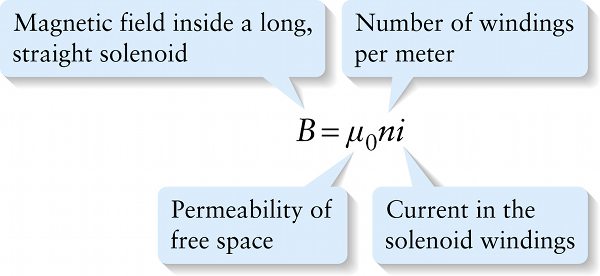Magnetic field inside a long, straight solenoid (19-17)
Question 1 of 4
Question
Permeability of free space
{"title":"Magnetic field inside a long, straight solenoid","description":"Incorrect","type":"incorrect","color":"#99CCFF","code":"[{\"shape\":\"poly\",\"coords\":\"82,133\"},{\"shape\":\"rect\",\"coords\":\"10,16,12,16\"},{\"shape\":\"poly\",\"coords\":\"144,22\"},{\"shape\":\"rect\",\"coords\":\"1,8,40,56\"}]"} {"title":"Number of windings per meter","description":"Wrong","type":"incorrect","color":"#ffcc00","code":"[{\"shape\":\"rect\",\"coords\":\"150,22,184,55\"}]"} {"title":"Current in the solenoid windings","description":"Incorrect","type":"incorrect","color":"#333300","code":"[{\"shape\":\"rect\",\"coords\":\"185,11,199,50\"}]"} {"title":"Permeability of free space","description":"Correct!","type":"correct","color":"#000080","code":"[{\"shape\":\"rect\",\"coords\":\"92,18,131,62\"}]"}Review
If the solenoid has length ℓ, the quantity n in Equation 19-17 equals the total number of windings N divided by ℓ. We can then write the magnetic flux through the crosssectional area A of each winding of the solenoid as
ΦB=BA=(μ0ni)A=(μ0Niℓ)A
.

